Branded wine offers a profitable return for c-stores according to the speakers at Drinksummit 2005.
Ten years ago few of us would have guessed that the most popular wines sold through independents would be from a land better known for its corn dogs than its chenin blanc. Driven by a strong pound against the dollar helping to give smaller retailers a competitive price point, US wines are dominating with a 25.6% share (compared to 15.2% in the overall market) in independents, followed by Australian wine at 23.8% and French with 17.7% (source: AC Nielsen). Wine consultant Andrea Hargrave, speaking at Drinksummit 2005 in June, said: “The success of New World brands is largely due to their management of their proposition, something Old World is not good at, apart from JP Chenet.” The winemakers from these countries have realised that consumers who know little about wine still want to trust what they’re buying, so they buy on brand. Also speaking at Drinksummit, Western Wines managing director Mike Paul said: “It’s a common mistake to think that the more you drink wine the more you become interested in it.” Overall, wine sales have boomed over the last few years, growing by over 30% between 1999 and 2004 from £5.8bn to £7.6bn with a projected growth by 2009 to reach around the £10bn mark, according to figures from Mintel. But c-stores still have a way to go to embrace the full opportunity that the sector offers, according to AC Nielsen marketing manager David Glennon. Wine has the leading share of the British total liquor off trade market with 34.8% (AC Nielsen MAT To WE 15.5.04), up from 33.6% for the same period in 2004. However, in the independent off trade sector wine is still second to beer with just 24.1%, growing from 22.9% in 2004. Glennon said that independents are missing a huge opportunity to build on the success of wine in the total off trade market with growth in volume and value up by 6% year on year, adding a staggering £229m compared to £37m for beer in the same time frame.
However, Hargrave warned that such growth cannot be sustained. The market is slowing, and retailers need to look to their own marketing of wines to make the most of opportunities within the sector. Retailers should be keeping abreast of market trends, use the FWD blueprint, and should ask for help when needed. “Don’t get stuck in a timewarp regarding brands,” said Hargrave. She also warned retailers away from cherry-picking to save cash: “It’s vital to choose a wholesaler with care.” On price she said that independents should be able to compete with multiples and still make a little profit too: “Use wholesale recommendations and don’t price yourself out of the market.” For independents, the most popular price bracket is the £4.01 to £5 range (36%, source: AC Nielsen Annual Value Share of Wine By Price Band) closely followed by the £3.01 to £4 (35%). However, the £5+ market is the fastest growing sector nationally, according to the AC Nielsen, and accounts for 20% of independents’ value share of wine. Glennon said that while the trend in wine is to trade up, consumers are still looking for a bargain: “Where independents can copy the multiples is the very deep cut-price promotion, where brands are given off-shelf display showing a high initial price, £8.99 or £7.99 seem popular, only to tumble to the promotion price which in reality is the true rrp of the product.” SPOTTING THE POTENTIAL
According to Harris International Marketing, wine shoppers are more affluent than average with a 28% bias to ABC1s. 55% of wine shoppers are female with 25% aged around 18-34 compared to 29% of shoppers of all categories, showing a 15% bias to the older shopper. Wine shoppers visit c-stores 4.1 times a week, 14% more than the average shopper. And wine shoppers have a trip spend of £10.18 compared to the £5.26 average. Many shoppers (18% compared to 9% in other categories) will take advantage of a promotion, but a whopping 12% of them (compared to 5%) are frustrated by failed purchases. Asked why they were buying wine in c-stores, 30% said they were buying for consumption that evening, while 27% said they had run out. Only 5% said it was because they forgot to buy wine at the supermarket.
THE LOST PROFITS
When it comes to merchandising wine, many c-stores still have a way to go to maximise their profit potential. According to Take Home Blueprint scheme director Ross Shelley: “The biggest mistake made when merchandising wine in c-stores is to throw all brands of various origin, colour and country together - expecting customers to find what they’re looking for.” He says that retailers should make sure they’re stocking the correct range, giving the right amount of facings to the right brands and using chillers to their advantage: “C-stores serve a drink-now market and offering chilled white and rosé is a clear advantage over multiple competition.” He also says that one of the advantages of branded wine is the amount of money spent promoting the brands to the consumer. Therefore, retailers should make sure the customer can see what they’re buying: “Face up those products - show the dog the bone. Millions are spent on logos, and here we have retailers wanting to sell barcodes.”
The latest Take Home Wine Blueprint (above) has recently been published and according to Shelley, this, plus the Wine Wheel available to retailers, can help clear up the merchandising confusion: “The wine Blueprint gives industry the best advice - unbiased knowledge to better understand blend and variety. A large proportion of our retail sector doesn’t drink due to religious restrictions and so advice of this nature encourages confidence in retailers when advising their customers on their purchasing.”
Ten years ago few of us would have guessed that the most popular wines sold through independents would be from a land better known for its corn dogs than its chenin blanc. Driven by a strong pound against the dollar helping to give smaller retailers a competitive price point, US wines are dominating with a 25.6% share (compared to 15.2% in the overall market) in independents, followed by Australian wine at 23.8% and French with 17.7% (source: AC Nielsen). Wine consultant Andrea Hargrave, speaking at Drinksummit 2005 in June, said: “The success of New World brands is largely due to their management of their proposition, something Old World is not good at, apart from JP Chenet.” The winemakers from these countries have realised that consumers who know little about wine still want to trust what they’re buying, so they buy on brand. Also speaking at Drinksummit, Western Wines managing director Mike Paul said: “It’s a common mistake to think that the more you drink wine the more you become interested in it.” Overall, wine sales have boomed over the last few years, growing by over 30% between 1999 and 2004 from £5.8bn to £7.6bn with a projected growth by 2009 to reach around the £10bn mark, according to figures from Mintel. But c-stores still have a way to go to embrace the full opportunity that the sector offers, according to AC Nielsen marketing manager David Glennon. Wine has the leading share of the British total liquor off trade market with 34.8% (AC Nielsen MAT To WE 15.5.04), up from 33.6% for the same period in 2004. However, in the independent off trade sector wine is still second to beer with just 24.1%, growing from 22.9% in 2004. Glennon said that independents are missing a huge opportunity to build on the success of wine in the total off trade market with growth in volume and value up by 6% year on year, adding a staggering £229m compared to £37m for beer in the same time frame.
However, Hargrave warned that such growth cannot be sustained. The market is slowing, and retailers need to look to their own marketing of wines to make the most of opportunities within the sector. Retailers should be keeping abreast of market trends, use the FWD blueprint, and should ask for help when needed. “Don’t get stuck in a timewarp regarding brands,” said Hargrave. She also warned retailers away from cherry-picking to save cash: “It’s vital to choose a wholesaler with care.” On price she said that independents should be able to compete with multiples and still make a little profit too: “Use wholesale recommendations and don’t price yourself out of the market.” For independents, the most popular price bracket is the £4.01 to £5 range (36%, source: AC Nielsen Annual Value Share of Wine By Price Band) closely followed by the £3.01 to £4 (35%). However, the £5+ market is the fastest growing sector nationally, according to the AC Nielsen, and accounts for 20% of independents’ value share of wine. Glennon said that while the trend in wine is to trade up, consumers are still looking for a bargain: “Where independents can copy the multiples is the very deep cut-price promotion, where brands are given off-shelf display showing a high initial price, £8.99 or £7.99 seem popular, only to tumble to the promotion price which in reality is the true rrp of the product.” SPOTTING THE POTENTIAL
According to Harris International Marketing, wine shoppers are more affluent than average with a 28% bias to ABC1s. 55% of wine shoppers are female with 25% aged around 18-34 compared to 29% of shoppers of all categories, showing a 15% bias to the older shopper. Wine shoppers visit c-stores 4.1 times a week, 14% more than the average shopper. And wine shoppers have a trip spend of £10.18 compared to the £5.26 average. Many shoppers (18% compared to 9% in other categories) will take advantage of a promotion, but a whopping 12% of them (compared to 5%) are frustrated by failed purchases. Asked why they were buying wine in c-stores, 30% said they were buying for consumption that evening, while 27% said they had run out. Only 5% said it was because they forgot to buy wine at the supermarket.
THE LOST PROFITS
When it comes to merchandising wine, many c-stores still have a way to go to maximise their profit potential. According to Take Home Blueprint scheme director Ross Shelley: “The biggest mistake made when merchandising wine in c-stores is to throw all brands of various origin, colour and country together - expecting customers to find what they’re looking for.” He says that retailers should make sure they’re stocking the correct range, giving the right amount of facings to the right brands and using chillers to their advantage: “C-stores serve a drink-now market and offering chilled white and rosé is a clear advantage over multiple competition.” He also says that one of the advantages of branded wine is the amount of money spent promoting the brands to the consumer. Therefore, retailers should make sure the customer can see what they’re buying: “Face up those products - show the dog the bone. Millions are spent on logos, and here we have retailers wanting to sell barcodes.”
The latest Take Home Wine Blueprint (above) has recently been published and according to Shelley, this, plus the Wine Wheel available to retailers, can help clear up the merchandising confusion: “The wine Blueprint gives industry the best advice - unbiased knowledge to better understand blend and variety. A large proportion of our retail sector doesn’t drink due to religious restrictions and so advice of this nature encourages confidence in retailers when advising their customers on their purchasing.”






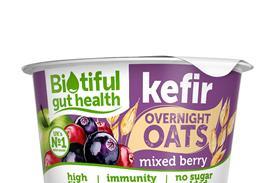


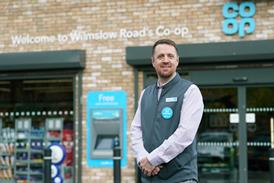










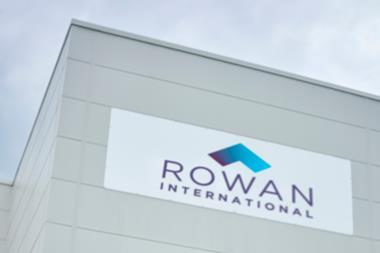



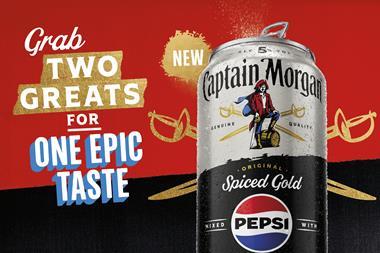

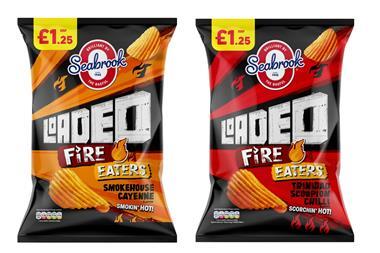
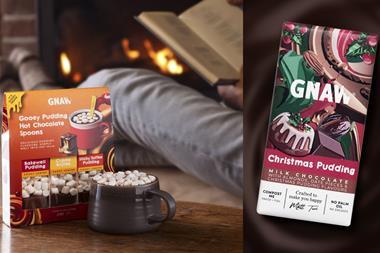
No comments yet